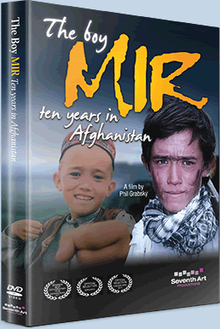This is the third in a series of behind-the-scenes blogs about the story behind the making of a documentary - in this case, my film, "Life Online," the story of a family in Florida that's uniquely dedicated to the "YouTube" lifestyle. Interested? Donate at: http://tinyurl.com/acegrw4 .
These blogs and vlogs will trace the evolution of this project as I prepare, shoot and edit "Life Online." I hope these prove helpful to aspiring filmmakers.
If you've read my blog, you may remember that I have a particular appreciation for Ken Loach's landmark 1969 film, "Kes," a narrative feature film about a 14 year-old's bleak life in a British mining town in the mid-20th century, and the faint flicker of hope he discovers in training a wild kestrel.
Film
The trailer for "Kes," as presented on Criterion's YouTube Channel
The film, a masterpiece of bare-bones filmmaking, is considered by the British Film Institute to be one of the top ten British films of the 20th Century. In America, however, it's still largely unknown. Until Criterion's recent Blu-Ray/DVD reissue, it wasn't easily available here. Even today, the authentic regional dialect makes understanding the film a challenge (though the new release offers options, including subtitles, and an alternative soundtrack - recorded at the time with the original actors - with more conventional english pronunciation).
"Kes," according to Loach, was heavily influenced by the tradition of documentary filmmaking. Loach was striving for authenticity at every stage - including casting. With one exception, every cast member including the extraordinary young lead, were non-professionals hired from the very town in which the story takes place. These individuals - particularly the school children - understood and lived the world featured in writer Barry Hines book and screenplay.
Loach, whenever possible, liked to minimize the filmmaking environment. He would keep lighting to a minimum (not an easy task when low-light technology was in its infancy), or create a sense of intimacy for the actors by removing even the camera from their immediate space. In one instance set in a greenhouse, Billy Casper, the main character, is engaged in a private conversation with his teacher. To preserve the authenticity of that private moment, particular for his non-professional lead actor, Loach had a hole drilled into the wall of the greenhouse, and shot the actors from a distance through a long lens.
Loach didn't like to over-use the camera for dramatic effect, preferring to allow actors and settings to establish mood.
Though "Kes" is a narrative film, and I'm shooting a documentary with a decidedly more upbeat vibe, it represents the sense of time, place and respect for the subject that I hope to emulate in "Life Online."
My goal, too, is to keep my presence to a minimum, and allow the real-life subjects to be themselves.



